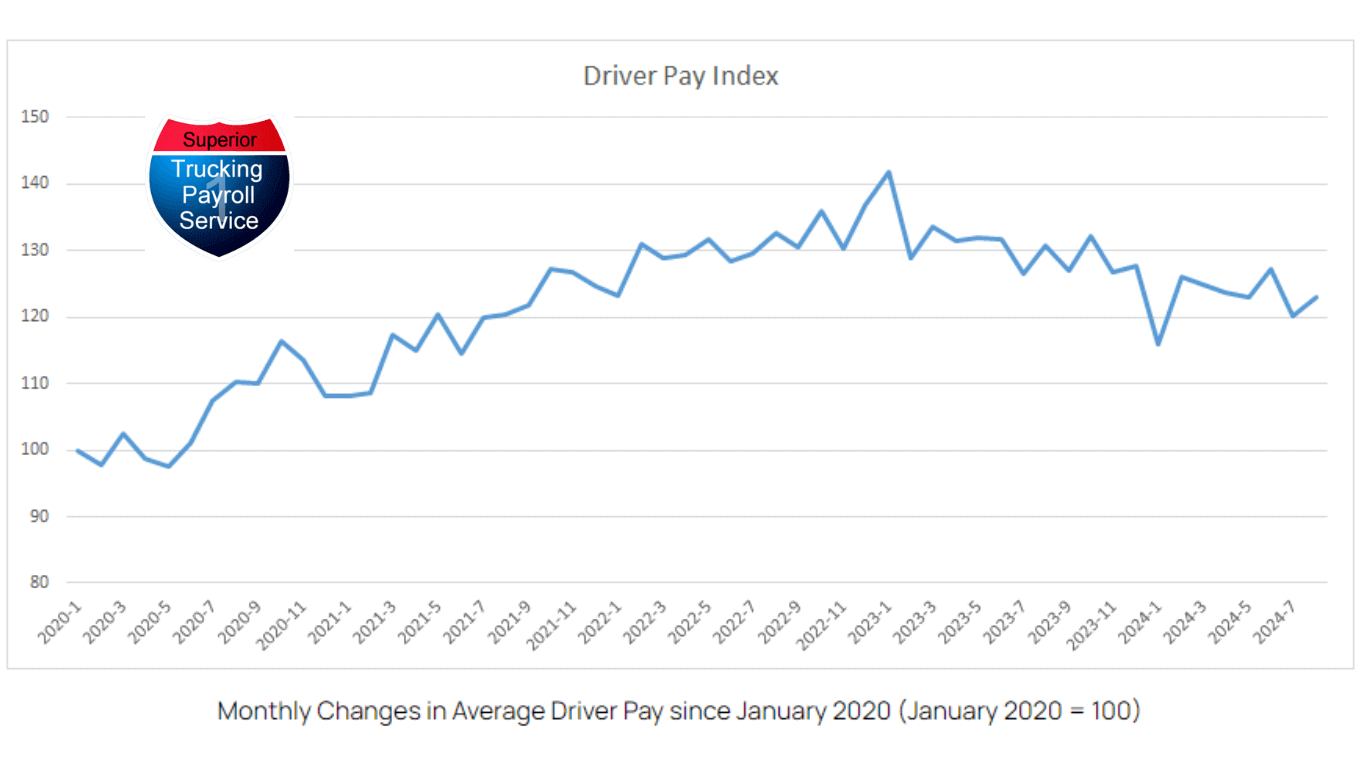Navigating the Rollercoaster of Driver Pay
Have you been struggling with the unpredictable ups and downs in truck driver pay over the past few years? Are you worried about how these changes might affect your financial stability and future? The trucking industry has seen dramatic shifts in driver wages from 2020 to 2022, leaving both drivers and companies uncertain and concerned about what’s next. This fluctuation makes it hard for drivers to plan their finances and for companies to manage payroll costs.
At Superior Trucking Payroll Service, we understand the challenges these wage changes bring. With our specialized focus on the trucking industry, we’ve gathered important data to help you make sense of this rollercoaster. By the end of this article, you’ll know what caused the surge in driver pay during these years and how it impacts your future in trucking. We’ll break down the factors behind the rise, the perceived driver shortage, and what all this means for you.
Overview of Truck Driver Pay
Between 2020 and 2022, the trucking industry saw notable changes in driver pay:
- 2020 to 2022: A steady increase in pay rates.
- Early 2023: Pay rates hit their peak.
While this time brought growth and opportunity, it also created challenges that many in the industry are still trying to figure out.
Based on data from Superior Trucking Payroll Service clients, this graph shows the driver pay trend from 2020 to mid-2024.

You are welcome to use this graph, provided you credit Superior Trucking Payroll Service, and include a link to this page. The graph, including our logo, may not be edited or altered in any way. This data may not be used behind paywalls or registration walls, and it cannot be utilized for commercial purposes.
The Rise in Truck Driver Pay (2020-2022)
The period from 2020 to 2022 was a time of rapid change for the trucking industry. Driver pay rates steadily increased, and it seemed like drivers were in high demand everywhere. This wasn’t a coincidence but rather the result of several major factors coming together.
Let’s break down what happened during this time:
How High Freight Demand and Rising Freight Rates Drove Up Truck Driver Pay
When the COVID-19 pandemic began in 2020, consumer behavior changed dramatically. With more people shopping online and a surge in demand for essential goods, trucking services became crucial. The need for delivering groceries, medical supplies, and other essentials skyrocketed, pushing freight demand to new heights.
Not only was demand high, but freight rates also soared. Carriers could charge premium rates for their services due to the urgency and volume of freight that needed to be moved. This influx of high freight rates made it possible for companies to offer higher pay to drivers. As freight rates peaked, so did the wages of truck drivers. For a time, it seemed like a win-win situation: companies were making more money, and drivers were enjoying better pay.
The Perceived Driver Shortage: Causes and Impact on Wages
While demand for freight services was high, the industry began to feel the effects of what many referred to as a “driver shortage.” But was there really a shortage of drivers? This sense of a shortage was more complex than it first appeared.
Here’s why:



Job-Hopping Among Drivers: Seeking Higher Pay and Better Conditions
With many companies offering higher pay and better benefits, drivers had more job options than ever before. As a result, job-hopping became common. Drivers frequently moved from one company to another, seeking the best pay, bonuses, and working conditions. According to the American Trucking Associations, in 2021, driver turnover rates reached approximately 72% in small trucking companies. This continued the perception of the driver shortage.
A Shifting Workforce: Retirements and Health Concerns Post-Pandemic
Many experienced drivers retired or left the industry due to health concerns, particularly in the wake of the pandemic. However, this wasn’t the main issue. The real challenge was the mismatch between the number of available jobs and the willingness of drivers to fill them. With the influx of freight needing transport and the competition for drivers so intense, the industry felt the strain. Companies were eager to hire, but with drivers constantly switching employers for better deals, it appeared as if there were simply not enough drivers to go around.
Demand for Better Pay and Conditions: Drivers Recognizing Their Value
Drivers recognized their value in this high-demand market. Many used the opportunity to seek better pay and benefits, leaving companies that didn’t meet their expectations. This behavior contributed to the feeling of a shortage, as companies had a hard time hiring quality drivers but also keeping them.
Trucking Companies' Response: Pay Increases and Incentives to Attract Drivers
In response to the driver shortage, trucking companies took drastic measures to attract and keep drivers. They increased pay rates, offered signing bonuses, and provided better benefits. Companies knew to compete in this tight market, they had to make their offers more appealing than their competitors. This led to a cycle of rising wages, as companies competed fiercely for the shrinking pool of available drivers.
Key Factors Driving the Increase in Truck Driver Pay from 2020 to 2022
The sense of a driver shortage, combined with high freight demand and rates, led to a steady rise in driver pay between 2020 and 2022. Companies offered higher wages to attract and retain drivers, while drivers used their value to get better pay and conditions. This period was characterized by growth and opportunity, but it also set the stage for the challenges that would come next.

The Impact of the 2023: Pay Peak and What It Means for the Future
By the end of 2022, driver pay hit its highest point. This peak happened because of the ongoing high demand for freight, intense competition among companies for drivers, and the lasting effects of the driver shortage. However, things were starting to change. In early 2022, freight rates began to drop. Although the decline was slow at first, it showed that the market was shifting. Despite these early signs, companies kept raising driver wages to stay competitive, hoping the drop in freight rates was only temporary.
The Peak's Impact and What's Next
The peak in early 2023 marked a turning point for the trucking industry. While higher pay rates were a relief for drivers, the early signs of declining freight rates hinted at challenges on the horizon. The industry was about to enter a period of adjustment, where both trucking companies and drivers had to adapt to changing market conditions.
Conclusion: Rise and Peak
From 2020 to 2022, the trucking industry experienced a significant rise in driver pay due to high freight demand, soaring freight rates, and a complex “sense” of driver shortage. Trucking companies responded by offering competitive wages, creating a market where drivers had more power and opportunities.
By early 2023, driver pay had hit its highest point due to unusual market conditions.As freight rates began to decline, companies continued to raise driver wages, striving to remain competitive. This made people wonder if these high pay rates could last and hinted at upcoming challenges.
In our next article, we’ll explore what happened after this peak in 2023. You’ll see how the ongoing drop in freight rates and other market changes led to lower driver pay and the impact on the trucking industry. Understanding these shifts is crucial for navigating the changes ahead.
Discover how the 2023 market shifts could impact your income and what steps you can take to navigate the changing landscape. Continue to Part 2 to explore how the declining freight rates in 2023 have begun to shape new trends in driver pay and how you can prepare for these changes.

Written by Mike Ritzema
Before founding Superior Trucking Payroll Service, Mike was the CFO of a trucking company with 80 trucks and a thriving brokerage. This experience gave him the perspective that a payroll solution has to make the lives of the office people better. All the solutions he has designed are to benefit everyone. Our company mission is to help trucking families and that includes the company owners, the drivers, and the office.

